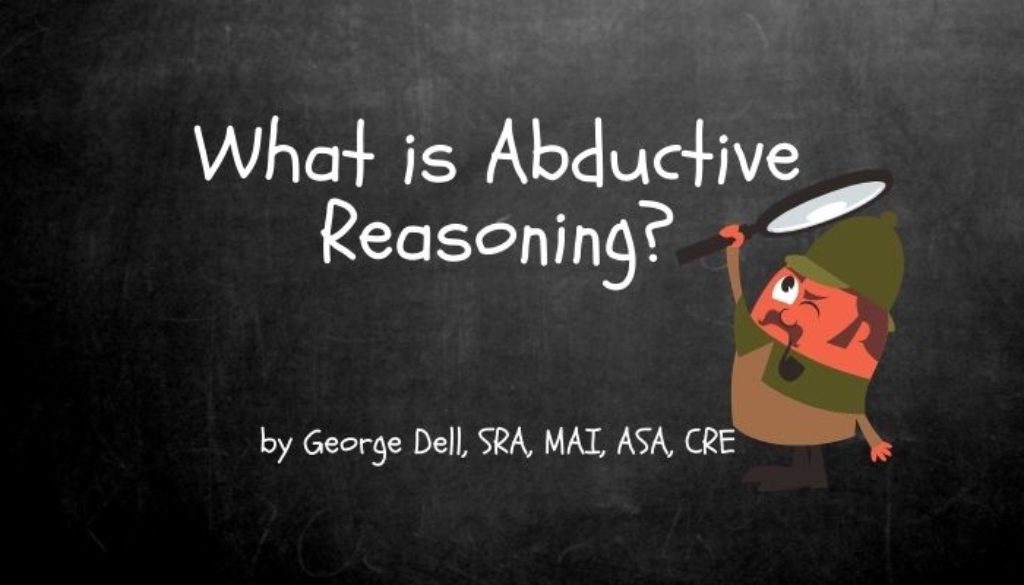Reasonable reasoning please! Its not as bad as it sounds!
We can figure this out. That’s what abductive reasoning means! Figure it out!
The three types of reasoning go along with three types of logic: deductive, inductive, and abductive.
- Deductive reasoning means a general rule leads to a specific conclusion, always true;
- Inductive reasoning is particular observation which leads to a general conclusion, probably true;
- Abductive reasoning is an observation which leads to a likely path of further investigation.
For valuation or deeper asset assessment, abductive reasoning is similar to preliminary scope of work. Abduction is based on accepted assumptions, accepted facts, preliminary identification/description, and your expert and prior understanding of similar questions.
For example: A client asks you to appraise a house. An internet photo shows it is a house. The client says it is a house. There is a person living in the house to let you inspect the inside. You assume it is a house. This is abductive reasoning. Your ‘first guess’ or likely solution path.
Actually, you have already formed the hypothesis that it is a house. You intend to use the sales comparison “approach,” and custom says 4 or 5 comps will do. That’s what you do. Its all about your initial information and your past experience in the neighborhood.
But identification with public records shows it is zoned for commercial, and your visit discloses it is surrounded by hotels. New information tells you your original hypothesis (and what the client wanted), was wrong. The new hypothesis is that it is possibly hotel land, with an interim use as a residential rental, or a speculative investment.
Now you have a new abductive theory – it is land to build a hotel on. Further investigation may result in you learning that it is not that either. It is too small a site size. But it may be enough for a restaurant . . .
Abduction is your initial best guess at the nature of the problem, a likely path of solution, and even a probable range of answer (a value, but with not much ‘believability’ or reliability).
Scientific reasoning comprises all three: abductive, deductive, and inductive. Abductive logic is the most important part of what a human appraiser can contribute to the valuation and risk assessment challenge. If the problem is not well-identified in the first place, the answer will be to the wrong problem. That doesn’t work.
Professional Appraisers and Asset Analysts© need skills in scientific reasoning as well as market knowledge, predictive methods (adjustments), and communication skills. The entire valuation process starts with abductive scope-of-work interaction with the client. The second step is primarily deductive, with three parts: 1) is a competitive comparable, or not? 2) What are the key predictor variables (main elements of comparison); and, 3) Will I need sale data beyond the directly competitive sales?
The third step is inductive. Given the sale data I have, there is a probability, or range my subject property would sell for, given the information I have about its ‘productivity,’ and the information I am able to understand about the market segment. The fourth step is to communicate the value and reliability of my investigation to the client.

November 18, 2020 @ 5:42 pm
Very good
Thank you
February 13, 2021 @ 7:18 pm
Thank you. That was very informative. I really appreciate the knowledge and is definitely worth sharing!
How Do I Move to EBV? Pt III(a) - George Dell, SRA, MAI, ASA, CRE
May 31, 2023 @ 1:15 am
[…] Is the right question asked? (The hypothesis) […]